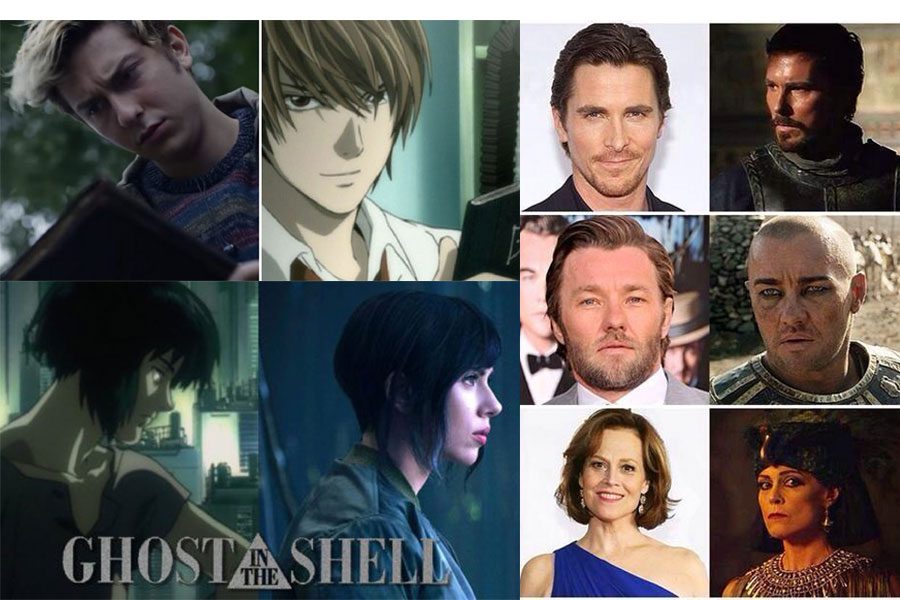Lack of diversity plays a lead role in American movies
American movies have been highly criticized for whitewashing, and lacking racial diversity and representation. This is very controversial issue that may affect young generations. Infographic: Mia Swanson
November 10, 2017
The United States has one of the biggest, if not the biggest, film industries in the world. It made over ten billion dollars in 2016, according to the Theatrical Market Statistics. Despite the success the US film industry has had, there are flaws. One of which being the lack of racial diversity and racial representation in American movies.
Movies were first invented in the 1890s. At the beginning of cinema, caucasian males were the main stars on screen. That started to change as more people took interest in the new career. Although it is difficult to find the exact dates of when people of color began playing major roles in movies, multiple sources give the general time period.
African Americans began to star in American movies around twenty five years after movies were invented. The first African American actor to have a leading role was Sam Lucas in 1914 in ‘Uncle Tom’s Cabin’.
Asian Americans started to star in American movies about forty years after movies were invented. The first Asian American actors to have a leading role in an American movie were Anna May Wong and Sessue Hayakawa in 1931 in ‘Daugher of the Dragon’.
Latino Americans began starring in American movies about thirty to forty years after movies were invented. It is unclear who the first Latino American actor was to star in American movies, but from actors like Carlos Gardel, Ramón Novarro, and Dolores del Río the time period is about thirty to forty years after movies were invented.
Isaiah Bischoff is a sophomore at South High but he is also a filmmaker. He has made multiple short films and documentaries. He wants to pursue a filmmaking career. As a young filmmaker Bischoff thinks that “[Filmmaking is] a exclusive art form”
The roles that people of color played at that time were primarily based on racial stereotypes. Macy Ashby is a social studies teacher at South High and she used to be the coordinator of a film club. Where students could learn history from movies. What Ashby noticed from the various movies she has watched was that people of color in movies “[Are] not just a random person, but they have to represent something.” The characters that people of color typically played were villains, sexual lovers, and morons.
Since the film industry was dominated by caucasians rather than people of color, there were many movies that had characters of color played by white actors. This is an act called ‘whitewashing’.
Movies like ‘Ghost in the Shell’ and ‘Death Note’ both came out in 2017 and have been highly criticized for whitewashing the animes the two movies originated from. The 2016 movie ‘Gods of Egypt’ also received criticism when the cast was white and the movie was about Egyptians. Another controversial movie was the ‘Lone Ranger’ which came out in 2013, where a white, actor played a Native American. These are just a few of the most recent whitewashed movies, however there are many more.
This lack of diversity and representation for people of color isn’t something that has been left in the past. It is still a current issue.
For example; the 2015 Oscars was referred to as ‘the whitest Oscars since 1998’. In 2016 the Oscars were boycotted in protest to the lack of racial diversity in American movies.
The USC Annenberg’s MDSC Initiative gathered that around 73 percent of actors in 2014 were white, 12 percent were black, 5 percent were asian, 5 percent were hispanic, and 4 percent were other.
The importance of having racial representation in movies and media is becoming more and more critical, because as the media becomes more important, new generations will look to the media for role models.
“In a study done by Adrienne Shaw called ‘Identity, Identification, and Media Representation in Video Game Play: And audience reception study’, found that people identified with characters that were similar to them. Not seeing a person that represents you “is kind of invalidating [and] makes you feel like you’re not part of the rest” said Ashby.
If there is a lack of people of color in films it becomes harder for viewers of color to fully place themselves into the position of that character. Or if the most common representation of people of color are villains, sexual lovers, and morons it becomes even more difficult to see beyond those types characters.
Having a role model to look up to is highly important for humans psychologically. Ashby said “I think it’s important for those movies to be out there so people can … not only see themselves in a movie but see people like them. So you can see yourself as someone who is successful too.”
According to Health Guidance, role models “guide us through life during our development, to make important decisions that affect the outcome of our lives, and to help us find happiness in later life.”
The lack of racial representation is not the only thing that the American film industry needs to improve. There is also a lack of gender, sexuality, and people with disabilities. Bischoff believes that the easy access to technology may resolve this issue. “Now anybody can make films.” Said Bischoff. “I hope that because almost anybody can make films that, that can help move bridges and gaps between people who generally haven’t historically made films.”






